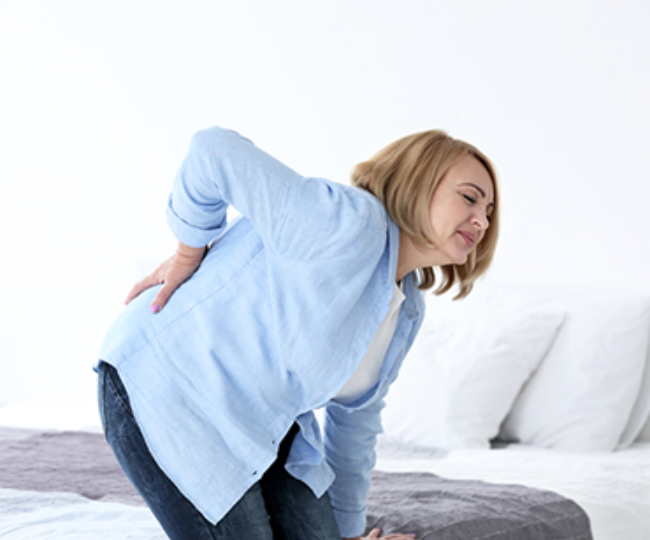Low Back Strain And Sprain
Low Back Strain And Sprain

Lumbar (lower back) muscle strains and sprains are the most common causes of low back pain. The back is prone to this strain because of its weight-bearing function and involvement in moving, twisting and bending. Lumbar muscle strain is caused when muscle fibers are abnormally stretched or torn. Lumbar sprain is caused when ligaments, the tough bands of tissue that hold bones together, are torn from their attachments. Both of these can result from a sudden injury or from gradual overuse.
When the lumbar spine is strained or sprained, the soft tissues become inflamed. This inflammation causes pain and may cause muscle spasms. Lumbar strain or sprain can be very debilitating.
Three types of muscles support the spine:
- Extensors (back muscles and gluteal muscles)
- Flexors (abdominal muscles and iliopsoas muscles)
- Obliques or rotators (side muscles)
Symptoms
- Low back pain that may radiate into the buttocks, but does not affect the legs
- Stiffness in the low back area, restricting range of motion
- Inability to maintain normal posture due to stiffness and/or pain
- Muscle spasms either with activity, or at rest
- Pain that persists for a maximum of 10-14 days
Diagnostic Testing
Diagnostic testing is usually not necessary, unless pain has been present for more than two weeks and has not improved as expected. It is important to rule out underlying causes such as an undetected disc injury. If symptoms are persistent, the following tests may be ordered by your doctor.
- X-ray
- Magnetic resonance imaging (MRI)
Treatment
Bed rest is recommended for a short period of time, usually from one to three days. This should be as brief as possible, as prolonged bed rest can lead to a loss of muscle strength, and may increase muscle stiffness, adding to pain and discomfort. Sprain and strain is commonly treated with nonsteroidal anti-inflammatory medication if the pain is mild to moderate.
Your doctor may recommend physical therapy. The therapist will dictate a treatment specifically designed for patients with low back pain. Therapy may include pelvic traction, gentle massage, ice and heat therapy, ultrasound, electrical muscle stimulation, and stretching exercises. Pain medication and muscle relaxants may also be beneficial in conjunction with the physical therapy.
Prognosis
The prognosis is excellent for a complete recovery from a lumbar strain or sprain injury. More than 90 percent of patients completely recover from an episode of lumbar muscle strain or sprain within one month. Heat and ice treatment are indicated on an “as needed” basis at home to treat sudden flare-ups of low back pain, along with anti-inflammatory medications. However, low back strain may develop into a chronic condition unless efforts are made to change habits that contribute to the problem.
Prevention Tips
The following tips may be helpful in preventing low back pain associated with strain and sprain:
- Do crunches and other abdominal-muscle strengthening exercises to provide more spine stability. Swimming, stationary bicycling and brisk walking are good aerobic exercises that generally do not put extra stress on your back.
- Use correct lifting and moving techniques, such as squatting to lift a heavy object. Don’t bend and lift. Get help if an object is too heavy or awkward.
- Maintain correct posture when you’re sitting and standing.
- If you smoke, quit. Smoking is a risk factor for arthrosclerosis (hardening of the arteries), which can cause lower back pain and degenerative disc disorders.
- Avoid stressful situations if possible, as this can cause muscle tension.
- Maintain a healthy weight. Extra weight, especially around the midsection, can put strain on your lower back.
